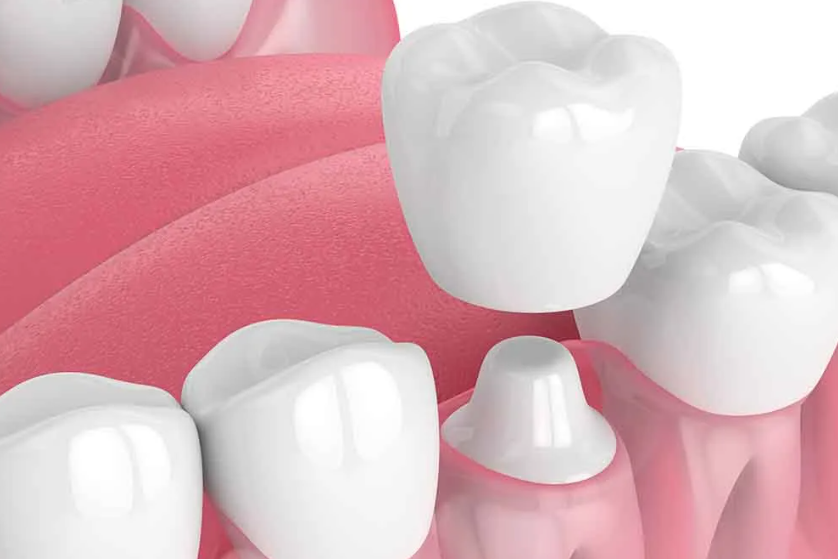- Immediate Aftercare (First 24-48 Hours)
- Rest
- Take it easy for the remainder of the day. Avoid strenuous activities for at least 48 hours to minimize swelling and bleeding.
- Bleeding Management
- Some bleeding is normal. If it occurs, apply gentle pressure with a clean gauze pad or a tea bag. If bleeding persists, contact our office.
- Swelling Reduction
- Swelling can be reduced with an ice pack applied to the face near the surgical site. Use the ice pack in 20-minute intervals.
- Pain Management
- Medications:
- Take prescribed pain medication as directed. You can also use over-the-counter pain medications like ibuprofen as directed.
- Oral Hygiene
- Gentle Cleaning
- Brush your teeth gently, avoiding the surgical area for the first few days. You can gradually start cleaning the area more thoroughly after a few days as comfort allows.
- Rinsing
- Avoid vigorous rinsing. A warm saltwater rinse, made with half a teaspoon of salt and one cup of warm water, may be recommended for many applications throughout the day.
- Eating and Drinking
- Soft Diet
- Stick to a soft food diet for a few days post-surgery. Avoid hard, crunchy, or sticky foods.
- Avoid Hot Foods and Beverages
- Steer clear of hot foods and beverages as they can promote bleeding.
- Activity Restrictions:
- Physical Activity:
- Limit physical activities, as increased heart rate can lead to increased bleeding.
- Follow-Up Care
- Suture Removal
- If sutures were placed, they might need to be removed in a follow-up appointment. Keep this appointment as scheduled.
- Healing Evaluation
- It’s important to have the surgical site checked for proper healing.
- Monitoring for Complications
- Infection Signs
- Watch for signs of infection such as persistent swelling, redness, or pus. If these occur, contact our office immediately.
- Persistent Discomfort
- While some discomfort is normal, persistent or worsening pain is not. Contact us if you experience this.
- Long-Term Care
- Oral Hygiene
- Good oral hygiene is crucial for healing and preventing infection. Continue with regular brushing and flossing routines, being careful around the treated area.
- Regular Dental Visits
- Maintain your current schedule of dental exams and cleanings. These visits allow for monitoring of your oral health and the success of the crown lengthening procedure.
- Dietary Considerations
- Healthy Diet
- Maintain a balanced diet to support overall healing. Foods rich in vitamins C and A can promote healing.
- Hydration
- Take in a lot of water to keep yourself hydrated. Dehydration can slow the healing process, therefore it’s best to stay away from alcoholic and caffeinated drinks.
- Lifestyle Adjustments
- Avoiding Tobacco Products
- Smoking or using other tobacco products can impede healing. It’s advisable to avoid these products during the healing period.
- Gentle Exercise
- Incorporate gentle exercises like walking once you feel up to it. Avoid rigorous activities until cleared by Dr. Boccuzzi.
- Cosmetic and Functional Outcomes
- Expectations
- Understand that it may take some time for the final aesthetic and functional results to be apparent as your gums heal and reshape.
- Protecting Your Gums
- Avoid practices that can be harmful to your gums, such as aggressive brushing or using toothpicks.
- Emergency Situations
- In Case of Emergency
- For severe pain, excessive bleeding, or signs of an allergic reaction to medication, contact our office immediately.
- After-Hours Protocol
- Follow the emergency instructions provided in your patient information packet for issues that occur outside of regular business hours.
Your comfort and well-being before and after dental crown lengthening procedures are our top priorities at Jaline Boccuzzi Dentistry. If you want your recovery after surgery to go well, follow these post-op recommendations to the letter.
Throughout your recovery, please do not hesitate to reach out to us if anything comes to mind. If you want the greatest result for your oral health, we’re here to help you get there.
